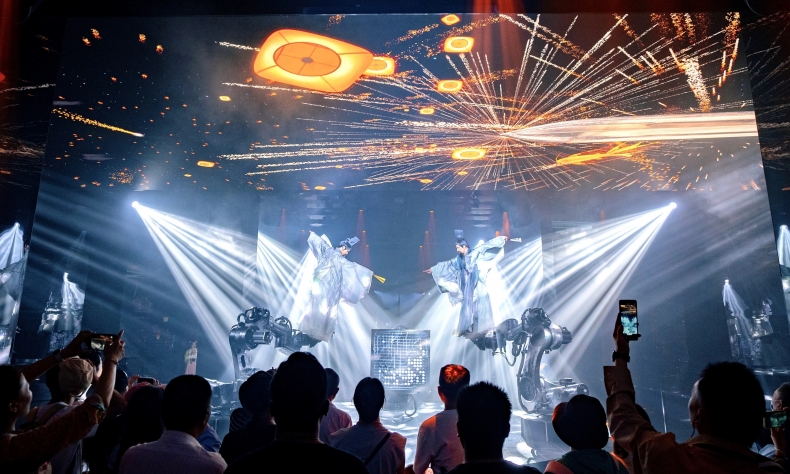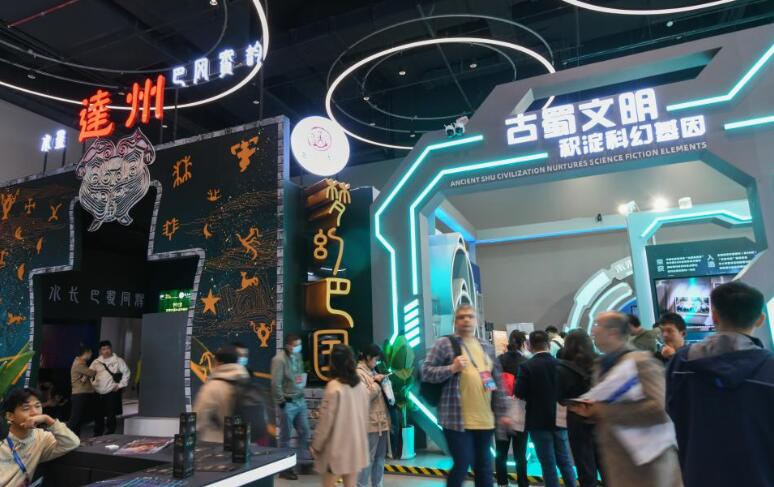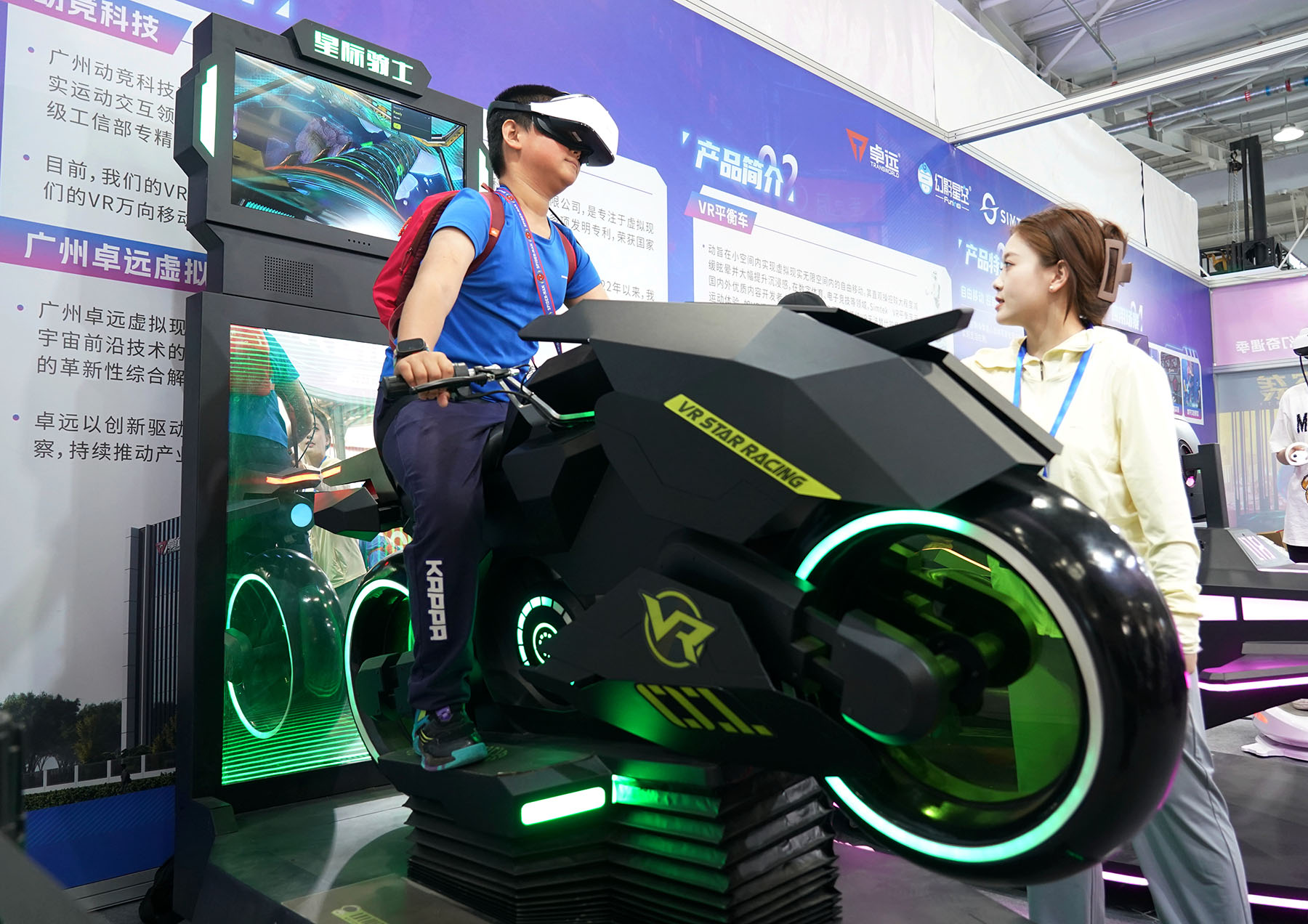China’s Sci-Fi Industry Gains Momentum

China’s rapid technological advancements provide a unique real-world foundation for sci-fi storytelling.
‘Science fiction (sci-fi) has never been a crystal ball predicting the future; it is a torch that illuminates the unknown. May every story we write light a lamp for humanity on our journey through the stars and seas,” said Liu Cixin, the acclaimed author of the world-renowned The Three-Body Problem trilogy. He spoke at the Eighth Annual Meeting and Academic Forum of the Sci-Fi Creation Research Base of the China Science Writers Association in 2025, part of this year’s China Sci-Fi Convention, which took place in Beijing on March 29.
China’s sci-fi industry underwent notable development in 2024. Its total revenue amounted to nearly 109 billion yuan ($15 billion), according to a report released on March 28 by the China Sci-Fi Research Center, which focuses on industry policy consultation and academic research.
Notable originality was evident in the literature, derivative products and themed tourism sectors, the report said.
Liu said he believes the greatest opportunity for the development of Chinese sci-fi lies in China’s own progress. “As the country continues to advance and embraces a sense of the future, the infinite possibilities inherent in technology will provide the most fertile ground for sci-fi creation,” he said.
The virtual world
The report from the China Sci-Fi Research Center examined five key areas of the sci-fi industry: literature, films and TV shows, video games, derivative products and themed tourism. It both highlighted the annual development trends and introduced the future directions of China’s sci-fi sector.
From 2017 to 2024, sci-fi literature has shown consistent growth, with its revenue growing for eight consecutive years. In 2024, this segment generated a total revenue of 3.51 billion yuan ($481 million), reflecting a year-on-year increase of more than 10 percent. Many creators are expanding their themes to emerging fields such as genetic engineering and virtual reality (VR), while also drawing inspiration from traditional Chinese culture.
For example, The Space-Time Painter, written by Chinese writer Hai Ya and published in 2022, was inspired by the 12-meter-long landscape painting A Panorama of Mountains and Rivers created by Chinese painter Wang Ximeng in the Northern Song Dynasty (960-1127). Hai won the Best Novelette of the Hugo Award, the prestigious international award in the sci-fi genre, in 2023 for the work.

“Every writer’s work carries the imprint of their historical and cultural background, and sci-fi writers are no exception. Chinese civilization has a rich and enduring history that continues to thrive. The excellence of traditional Chinese culture serves as a vast ‘database’ for creativity,” Hai said after he won the Hugo Award.
Sci-fi films and TV have also showed an upward trend. In 2024, revenue from sci-fi films and TV shows reached 6.71 billion yuan ($923 million), with micro-series and short videos experiencing significant growth. According to the report, a total of 169 sci-fi micro-series were released across major platforms in 2024. The adoption of AI-generated content (AIGC) technology has significantly lowered production costs and improved efficiency, unlocking new growth potential for the sci-fi micro-series sector.
Sci-fi video games reported a total revenue of 71.81 billion yuan ($10 billion) in 2024, showcasing notable improvements in production quality.
The revenue from derivative products amounted to 2.53 billion yuan ($348 million) last year, marking an 11-percent increase compared to the previous year.
Themed tourism generated 24.4 billion yuan ($3.35 billion) in 2024, with domestic sci-fi theme parks capturing a larger share of revenue than in the past.
The story of The Three-Body Problem was first serialized in Sci-Fi World magazine in 2006 and soon became a hit. Since then the Three-Body Universe—the global exclusive rights holder for the content development and commercial derivatives of the trilogy—has connected various industries such as performing arts, culture and tourism through the Three-Body IP, creating derivatives such as stage plays and immersive sci-fi experience events.
On March 25, the country’s first immersive sci-fi complex was opened in Suzhou, Jiangsu Province. The facility combines metaverse technology with digital tourism and collaborates with Three-Body and other sci-fi IPs, aiming to integrate sci-fi into the daily lives of visitors through a range of activities and events.
Sci-fi plus AI
With AI and other cutting-edge technologies playing an increasingly important role, many regions in China have identified the sci-fi industry as a key driver of economic growth.
In January, Beijing introduced an action plan to boost the sci-fi sector, outlining more than 30 policy measures aimed at enhancing industrial development, commercializing sci-fi IPs, and fostering technological innovation.
By the end of 2025, the capital city aims to expand its key sci-fi sectors to 60 billion yuan ($8.3 billion), establishing a well-structured industry ecosystem. By 2027, this figure is expected to surpass 100 billion ($14 billion).

The action plan emphasizes support for AI, the metaverse and other emerging technologies, with a focus on showcasing AI-powered sci-fi applications, presenting AI-generated sci-fi scenarios, and advancing AI-driven foundational models for content creation.
Liu highlighted that China’s rapid technological advancements provide a unique real-world foundation for sci-fi storytelling. Breakthroughs in AI, manned spaceflight and quantum communication serve as a strong inspiration for sci-fi creators.
“AI provides powerful tools for sci-fi content creation,” Wang Zhigang, a professor at Tsinghua University’s Academy of Arts and Design, told Xinhua News Agency. “With its immense computing power, AI will drive multi-modal human-machine collaboration, revolutionizing research and development, and design and production, and continuously creating new technological marvels in the era of intelligence.”
Official data indicate that Beijing is now home to nearly 800 sci-fi enterprises, with the industry estimated to have reached a market size of 48 billion yuan ($6.6 billion) in 2024. Sci-fi industrial clusters, including one centered in Shougang Park in Shijingshan District, are rapidly taking shape, signaling a thriving sci-fi ecosystem.
Shougang Park, a key site from the Beijing 2022 Olympic and Paralympic Winter Games, was constructed by repurposing a steel mill. With its natural cyberpunk style, the industrial heritage site is evolving into a vibrant cultural and creative hub. It blends art, technology and innovation, attracting a variety of events and activities. This year’s China Sci-Fi Convention was also held in the park.
At an immersive sci-fi exhibition hall at Shougang Park, the interstellar journey experience installation created by Insitpace (Shandong) Digital Technology Co. Ltd. has impressed many visitors.
This project combines technologies such as AI and VR technologies, allowing participants to not only experience a human spacecraft up close but also interact with objects in the virtual space using gestures.
The company’s Chief Technology Officer Ma Yuguang said AI not only helps design the project’s script but also improves the efficiency of sci-fi content production. He explained that what used to take a week for 3D modeling can now be done in just a few minutes using large models, significantly reducing manual modeling costs.
“In the future, we will also introduce non-player characters like AI astronauts, making interactions with users smarter, smoother and more engaging,” Ma told Xinhua.
 Facebook
Facebook
 Twitter
Twitter
 Linkedin
Linkedin
 Google +
Google +










